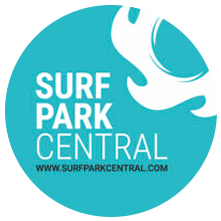By: Katie Rodriguez
Ian “Kanga” Cairns needs little introduction. A surfing powerhouse from Western Australia, he’s arguably one of the most influential people in the sport of surfing. Over the last 50-plus years Cairns has held titles that run the gamut from competitor to founder: 1976 World-Title runner-up, co-director of the National Scholastic Surfing Association, director of the Association of Surfing Professionals (now the World Surf League), a founding member of the famed “Bronzed Aussies”, stunt surfer for Gary Busey in the 1978 surf epic Big Wednesday, head coach of the Surfing America team that took out the International Surfing Association (ISA) gold medal in 2009, and much more. When it comes to modern-day competitive and professional surfing Cairns has seen it all—spearheading progression and innovation since its inception.

But when it comes to surf parks and their impact on surf culture Cairns says, “I think it’s really, really early in the discussion of [the] impact on surfing that surf parks are having.”
Surf parks and competition are not a new concept – the first surf-park contest was held at Pennsylvania’s Wildwater Kingdom back in 1985. Yet the evolution of artificial wave technology has been painfully slow, and after a long foray filled with costly ventures and failed prototypes, we’re just starting to enter a time where surf parks are both commercially viable and creating waves that reach a high bar of competitive-surfing standards.
“The quality of waves that are happening at URBN SURF on a regular basis [and] the way that it’s being utilized by Surfing Victoria to run events – that’s sort of a model for what the future could look like,” forecasts Cairns.
However, there are foreseeable downsides Cairns thinks the industry should keep a close eye on. With what is now both a booming and material-intensive industry, the potential ramifications on the environment are of growing concern.
“The cleanliness, the energy that’s used, the use of water and the evaporation…all these things together can’t be very environmentally sensitive,” says Cairns. “In a world of diminishing resources, coupled with environmental concerns, the idea of using these resources for the pursuit of fun seems a little frivolous.”
Among the myriad of elements that comprise surf culture, the joy one can experience from the act of surfing is perhaps the most difficult to quantify. How do we measure the impact that the surfing experience can have on a life, and how does this measure up against something like the environmental impact of surf parks? Cairns speculates that because surf parks can provide such an overwhelmingly positive experience, there can be unknown potential byproducts that make it difficult to weigh against environmental concerns.

Cairns believes that surf parks provide people with fun, recreation, time outside – essentially mirroring the experience of going on a trip to the beach with your family. “All of those things,” Cairns explains, “are a joyful experience which is what surfing is about, and in the end I think that’s what some of these parks will provide. And that’s a healthy thing, so that’s got to be counterbalanced against the environmental impact.”
Utilizing surf parks as competition sites, however, is a different story. “I think that surf contests in wave parks are like watching paint dry. It could not get more boring,” Cairns shares with a chuckle. The cocktail of unpredictable conditions that the ocean can throw at a surfer, and the way that competitor responds to it, says Cairns, is what makes a surf contest interesting as well as a showcase of an athlete’s true abilities. “If you want to host a surfing event that’s meaningful,” says Cairns, “…you go to the real waves in the real ocean.”
In the next decade, Cairns sees surf parks capitalizing on the growing popularity of surfing. One of the things moving the sport forward, he believes, is the inclusion in the Olympics.
On whether or not he feels the burgeoning wave pool industry will advance the sport, Cairns pushes back. “The expansion of surfing into all of these countries that are now members of the ISA is incredible. Will surf parks spawn that? No. Will surf parks take advantage of that? Yes. That’ll create demand and possible economic viability for surf parks in places that you would have never imagined.”
For more information on Ian’s work at Surfing.com please click here to learn more
























You must be logged in to post a comment Login